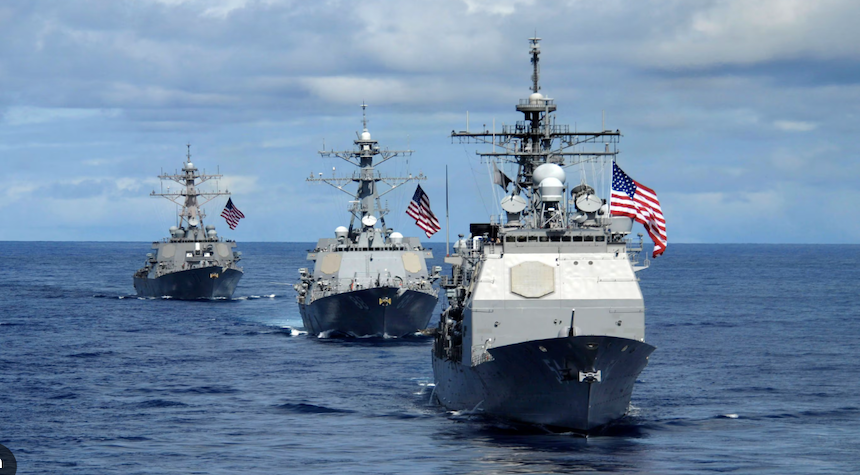Paul Kennedy, a historian, wrote The Rise and Fall of British Naval Mastery in 1976. It traced the decline of British naval power after World War I, through the various wars and conflicts that followed, and on to World War II and Cold War. Kennedy’s book contains lessons and warnings that can be applied to American naval power which is likely experiencing a similar decline.
Kennedy’s book combines geopolitics and history, devoting a chapter to Alfred Thayer Mahan’s theories, an American naval commander and advocate of sea power. Halford Mackinder was a British Geographer who predicted the threat continental powers would present to sea powers. Both agreed that sea power was of paramount importance, despite their divergent views. Mackinder predicted a technologically and politically advanced China would become a major Eurasian power, with a formidable sea power. This prediction came true in the 21st Century.
Kennedy starts his book by discussing Mahan’s sea power elements during the “Columbian age,” when Europe expanded their influence globally. Elizabeth I transformed Britain’s navy into an ocean-going force that could compete with Holland and Spain. Kennedy points out that this period laid the groundwork for the golden age of English maritime enterprise. It featured figures such as Drake and Raleigh, the defeat of Spain’s Armada and global explorations, along with the establishment of colonial settlements.
The British Navy experienced a temporary decline during the Stuarts, but gained strength following the Glorious Revolution in 1688. Over the next 50 years, Britain fought against France and Spain. Victories were achieved during the Seven Years War, and the War of American Independence. Napoleon’s rise and the French Revolution led to significant naval battles that resulted in Pax Britannica, a period of British dominance on all fronts.
 The spread of technology and industrialization in the late 19th Century allowed states the size of continental countries like Germany and America to challenge Britain’s maritime supremacy. Japan became a powerful sea power by defeating China, and Russia. Theodore Roosevelt sent the “Great White Fleet”, a U.S. Navy fleet, around the globe at the beginning of the 20th Century, in part because he was influenced by Mahan’s theories on sea power.
The spread of technology and industrialization in the late 19th Century allowed states the size of continental countries like Germany and America to challenge Britain’s maritime supremacy. Japan became a powerful sea power by defeating China, and Russia. Theodore Roosevelt sent the “Great White Fleet”, a U.S. Navy fleet, around the globe at the beginning of the 20th Century, in part because he was influenced by Mahan’s theories on sea power.
The First World War was the start of Britain’s relative decline in terms of its maritime power. In 1916, the Battle of Jutland was a draw. This led to an increased level of caution by British naval commanders because of the German U Boat threat. Kennedy writes that the war was a strain on Britain’s resources and, after the war ended, Britain no longer had the ability to maintain its maritime dominance against the United States. The United States replaced Britain as the dominant naval power after the Second World War.
Mahan predicted American naval dominance. Winston Churchill recognized the shift and aligned Britain’s future to the U.S. via the “special relationship.” After the two world wars, Britain lost its empire, as well as its naval dominance, while the U.S. emerged as the dominant power at sea. Mahan’s writings were the foundation for American naval expansion. Mahan urged statesmen to increase U.S. maritime power in order to play a larger role internationally.
The Second World War cemented American naval dominance, as the U.S. Navy transported forces around the world and won crucial battles. During the Cold War Soviet naval power was never a serious threat to U.S. maritime command. In the 1970s, President Ronald Reagan built a 600 ship navy to address a temporary gap in naval production. John Lehman (a Mahan follower) was Reagan’s Navy Secretary. He developed a “Maritime Strategy”, to give the Soviet Union unmatched naval power.
The Chinese naval threat today is the greatest challenge to American naval dominance. China’s naval intelligence reported that China has a 232-fold greater shipbuilding capability than America, and a fleet of 370 ships compared to America’s 291. China’s naval force is expected to reach 435 ships by 2030 while America’s fleet will be reduced to 290. The U.S. has a technological advantage, but China’s geographic advantage in western Pacific and its superior numbers are a serious threat.

In the last 30 years, America has been experiencing “strategic expansion” that is similar to the British Empire’s demise. The U.S., unlike Britain, may have to face a competitor in China, as opposed to an ally who succeeded Britain. This change highlights the importance of addressing present naval challenges in order to maintain global security and stability.




